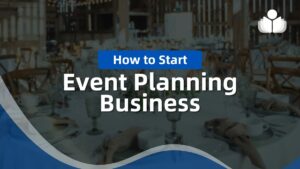How to Start Your Own Study and Support Group
This procedure also is in Microsoft Word format.
People rarely improve their learning and themselves merely by getting advice from articles and others. The likelihood of success is dramatically improved if they share ongoing inquiry, reflection, support, and accountability (coaching) to actually apply that advice. Getting that kind of help is much easier than you might think. Here is how you can arrange that with even one or two other people.
A study or support group is a small group of people who are committed to helping each other learn about a common topic or skill or to improve some aspect of themselves. They help each other primarily by sharing thoughtful questions, advice, and materials, as well as sharing support and accountabilities to take action between meetings.
Here is a handy procedure you could use to start your own group. The procedure has been used many times to create powerful learning experiences for every group member. The group could meet in person or over the Internet.
Preparation
1. Complete a draft of the design of your group (guidelines are included below).
2. Select at least one additional person who might have a similar interest or need regarding a common topic or skill. For example, point them to a Library topic that you are interested in applying in your life or work.
3. Share this procedure along with the design, with them.
4. Ask them if they have any questions or suggestions about the design of the study or support group.
5. Share a sample Learning Journal with them.
6. Ask if they’d optionally like to form a personal Learning Plan.
7. Ask if they are committed to attending.
8. Share contact information for each member.
9. Hold your first meeting in which you:
a. Share introductions.
b. Pose any questions or changes about the procedure or Learning Journal.
c. Schedule your meetings.
Design Plan of Your Study or Support Group
Common overall topic or goal you are studying or getting coached on (pick a topic from the Library?): ___
Names of members of the group (choose 4-5 members at most): ___
Number of meetings (6 is typical): ___
Length of meetings (90 minutes is typical): ___
Frequency of Meetings (every two weeks?: ___
Means of communication (in-person or virtual): ___
Facilitator (to manage ground rules and agenda): ___
Preferred ground Rules:
a. Attend every meeting, unless excused.
b. Maintain confidentiality about members and meetings.
c. Come prepared for reach meeting.
d. Support each member’s learning.
e. All opinions are honored.
Method to capture learning (share the sample Learning Journal):
Meeting Agenda (At Most 90 Minutes Long)
1. Opening — Review agenda and ground rules, and name today’s topic (7 minutes).
2. Learning — In round-table approach, each member gets at least 15 minutes to:
a. Share the status of any actions that they took from the previous meeting, and what they learned from those actions.
b. Name the highlights and learning from the current topic’s readings (if readings were applicable).
c. Share any questions regarding the topic.
d. Ask for additional resources if needed.
e. Get help from other members in the form of thoughtful questions, advice and/or materials.
3. Closing — (8 minutes)
a. Evaluate this meeting from a score of 1 (very low) to 5 (very high), and what could be done to improve the meetings.
b. Verify date and timing of next meeting.
Additional Resources
About Study Groups
- Five Tips for an Effective Study Group
- How to Form a Study Group
- How to Form a Successful Study Group: Tips and Strategies.
- How To Create an Effective Study Group
About Coaching Groups
- Ultimate Guide to Coaching Groups
- Effective Group Coaching 101
- Group Coaching: Benefits and Key Characteristics
- All About Coaching
- Skills in Questioning
About Managing Meetings
For the Category of Personal Development:
To round out your knowledge of this Library topic, you may want to review some related topics, available from the link below. Each of the related topics includes free, online resources.
Also, scan the Recommended Books listed below. They have been selected for their relevance and highly practical nature.
 Sections of this topic
Sections of this topic
















